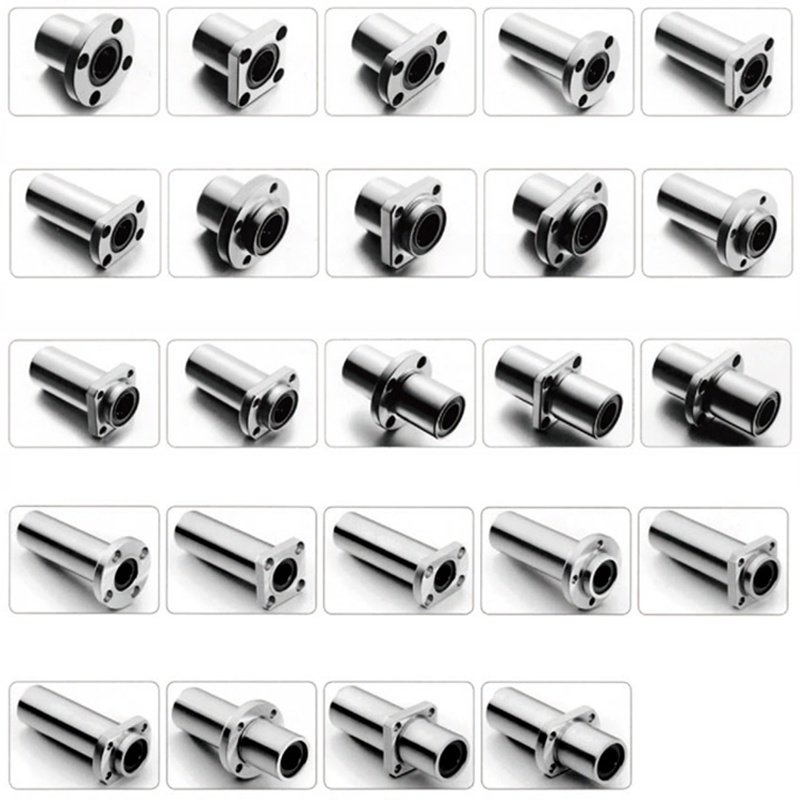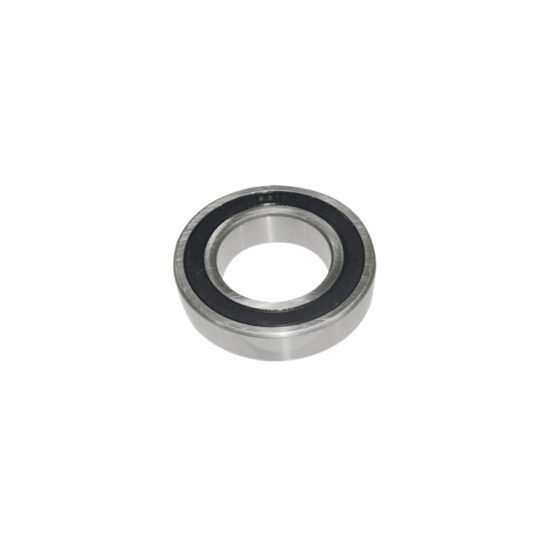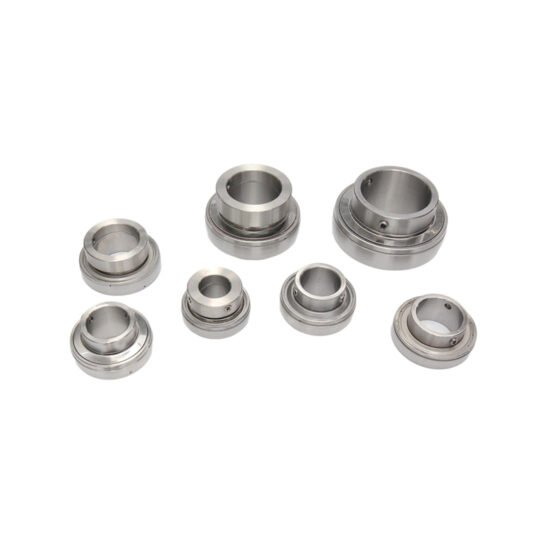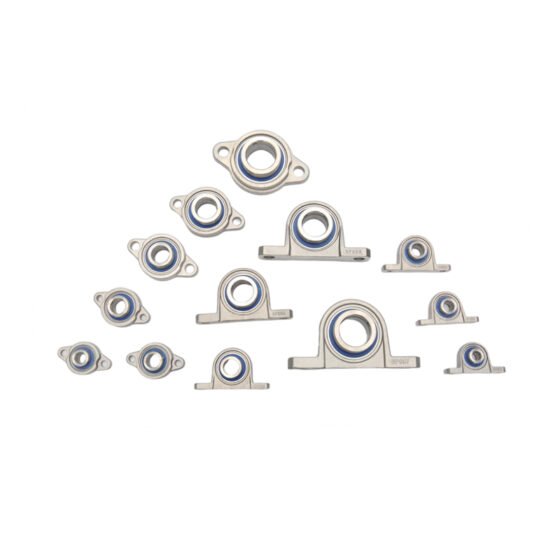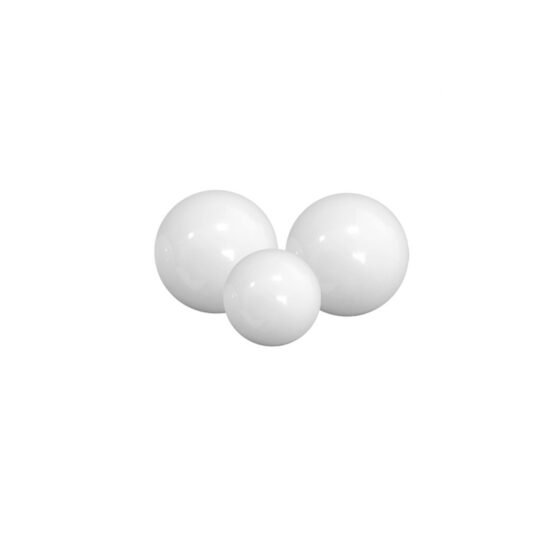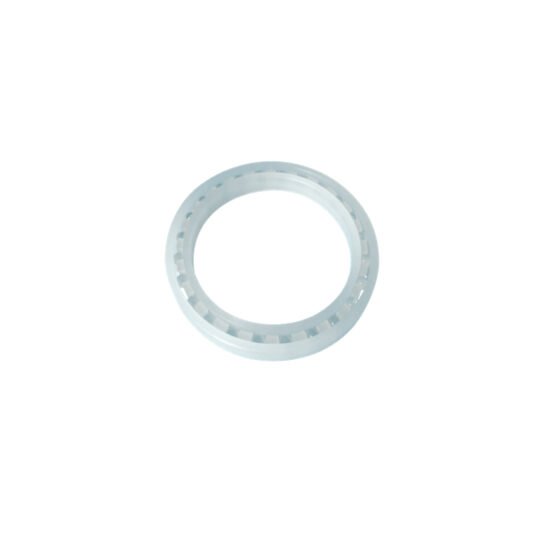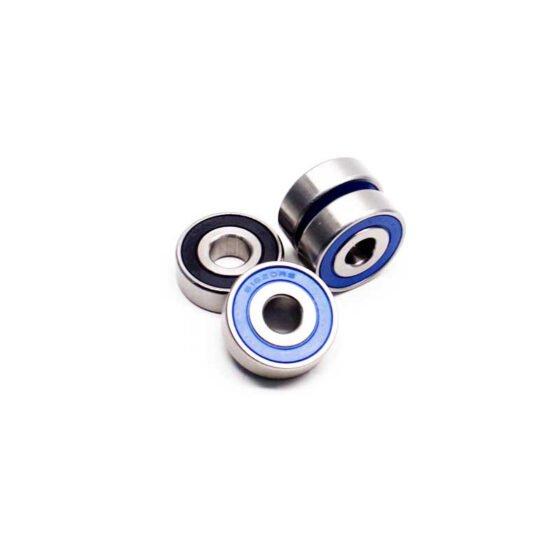Roulements linéaires en acier inoxydable are precision-engineered components designed for linear motion applications. Made from high-quality stainless steel, these bearings provide superior durability, résistance à la corrosion, and smooth, frictionless movement, making them ideal for a wide range of industrial and automation applications. Stainless steel’s natural resistance to rust and corrosion, along with the bearing’s precision design, ensures reliable and efficient performance, even in harsh environments.
Key Features of Stainless Steel Linear Bearings
- Résistance à la corrosion
- Made from high-quality stainless steel, these bearings offer excellent resistance to rust, oxidation, and corrosion, making them ideal for applications in harsh environments, including food processing, pharmaceuticals, and marine industries.
- Durability and Longevity
- Stainless steel linear bearings are built to withstand high loads and wear, offering a longer lifespan compared to other types of bearings, reducing maintenance costs and downtime.
- Smooth and Precise Motion
- These bearings provide low friction and smooth linear motion, ensuring high precision and minimal wear over time. They are ideal for applications requiring accurate positioning and smooth operation.
- Haute capacité de charge
- Stainless steel linear bearings can handle high radial and axial loads, making them suitable for heavy-duty applications in manufacturing and machinery.
- Temperature Resistance
- Stainless steel linear bearings can function effectively in a wide temperature range, from low to high temperatures, making them versatile for various industries and applications.
- Customizable Designs
- Available in various sizes and configurations, including closed and open designs, to suit specific application needs. Custom solutions can be provided to meet the precise requirements of your project.
Applications of Stainless Steel Linear Bearings
- Automation and Robotics
- Stainless steel linear bearings are commonly used in robotic arms, conveyors, and automated production lines, where precision and reliability are critical.
- CNC Machines
- Ideal for use in CNC machines, providing smooth motion along the X, Y, and Z axes for precise milling, drilling, and cutting operations.
- Équipements médicaux
- Used in medical devices and equipment that require reliable, low-maintenance, and smooth linear motion for operation, including diagnostic machines and surgical robots.
- Packaging Machines
- Used in packaging lines for consistent and reliable motion during product assembly, labeling, and packaging processes.
- Food and Beverage Industry
- Stainless steel linear bearings are ideal for food processing equipment where hygiene and corrosion resistance are essential.
- Fabrication de semi-conducteurs
- Used in semiconductor production equipment where high precision and reliability are crucial for handling delicate materials.
Common Models of Stainless Steel Linear Bearings
Roulements linéaires en acier inoxydable come in various models and sizes, designed to suit different industrial applications. The models are primarily categorized based on load capacity, size, type, and the specific requirements of the application. Below are some of the most common types and models of Roulements linéaires en acier inoxydable:
Common Models and Categories
- SL Series (Roulements linéaires en acier inoxydable)
- SL-12, SL-16, SL-20, SL-25 etc.: These models are typically used in general linear motion applications and are suitable for light to medium load conditions.
- Features: These bearings typically have ball or roller designs and offer low friction, making them ideal for precision machinery, automation, and robotics.
- LM Series (Linear Motion Bearings)
- LM10UU, LM12UU, LM16UU etc.: These are standard linear bearings with an internal and external race and ball bearings, designed for medium to heavy load applications.
- Features: These bearings are known for their high load capacity and are commonly used in CNC machines, automation systems, and robotics.
- LME Series (Linear Motion Ball Bearings)
- LME10, LME12, LME16 etc.: These are standard linear bearing blocks that provide precise motion and high performance.
- Features: Ideal for high-precision applications, these bearings provide smooth linear motion with low friction for accurate positioning.
- SSR Series (Stainless Steel Rod Bearings)
- SSR12, SSR16, SSR20 etc.: These models are specifically designed for harsh or dry running environments, often made of stainless steel for superior corrosion resistance and durability.
- Features: Suitable for high-load environments and extreme conditions, such as high temperatures or exposure to corrosive substances.
- SC Series (Stainless Steel Cylindrical Linear Bearings)
- SC10, SC12, SC16 etc.: Cylindrical linear bearings with a smooth, uninterrupted motion.
- Features: This series is ideal for continuous and smooth linear movement, often used in machinery that requires precise and reliable operation in high-load conditions.
- SM Series (Stainless Steel Miniature Linear Bearings)
- SM6, SM8, SM10 etc.: These are smaller bearings designed for compact, lightweight applications, such as small automation systems and precision instruments.
- Features: Miniature bearings with high precision, perfect for space-constrained applications or sensitive equipment where accuracy is crucial.
Common Specifications for Linear Bearings
- Inner Diameter (ID): Common sizes include 10mm, 12mm, 16mm, 20mm, etc., chosen based on the application’s specific requirements.
- Outer Diameter (OD): Common outer diameters include 16mm, 20mm, 25mm, 32mm, etc.
- Length (L): Varies from short lengths (a few millimeters) to long bars (several meters), depending on the application.
- Rail Type: Some models are designed to work with specific rail systems to ensure smooth linear movement.
Factors to Consider When Choosing the Right Model
- Capacité de charge
- Choose the appropriate model based on your load requirements. For light loads, SL series is ideal, while the LM series is better for high-load applications.
- Size and Compatibility
- Ensure that the bearing’s inner diameter, outer diameter, and length are suitable for your machine or system’s design and space constraints.
- Precision Requirements
- For applications requiring high precision, select models with low friction and high-precision manufacturing, such as the LME or SL series.
- Environmental Conditions
- In harsh environments or applications exposed to moisture or chemicals, select stainless steel bearings (par exemple, SSR series) to prevent corrosion.
- Lubrication and Maintenance
- Some bearings are designed for dry running or low friction, while others may require lubrication. Choose accordingly based on your maintenance capabilities and operational conditions.
 CÉRAMIQUE LOWIFAR
CÉRAMIQUE LOWIFAR

